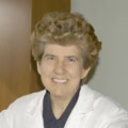Platelet resistance to the antiaggregating effect of N-acetyl-L-cysteine in obese, insulin-resistant subjects.
Mots clés
Abstrait
BACKGROUND
We investigated whether the platelets from obese subjects are sensitive as those from controls to the antiaggregating effects of N-acetyl-L-cysteine (NAC)-an antioxidant thiol that increases availability of endogenous nitric oxide (NO)-and of superoxide dismutase (SOD) and amifostine which act as scavengers of superoxide anion.
METHODS
In platelets from obese subjects (n=20, body mass index [BMI]=34.2+/-1.9 kg/m(2), homeostasis model assessment [HOMA] index=5.5+/-1.1) and controls (n=20, BMI=21.4+/-0.6 kg/m(2), HOMA index=1.4+/-0.2), we investigated the effects of NAC on aggregation and on 3',5'-cyclic guanosine monophosphate (cGMP) synthesis and the interplay between NAC and the organic nitrates glyceryl trinitrate (GTN) and sodium nitroprusside (SNP). Similar experiments were carried out with SOD and amifostine.
RESULTS
We found that a 3-min platelet exposure to NAC decreased aggregation and increased cGMP in controls, but not in obese subjects. Only more prolonged incubations exerted a small effect also in obese subjects. GTN and SNP increased platelet cGMP in both groups, but their effect was much lower in obese subjects. NAC (3 mmol/l), SOD (150 U/ml), and amifostine (50 micromol/l) enhanced the increase of cGMP elicited by NO donors, but again, the effect was much lower in obese subjects.
CONCLUSIONS
Since antioxidants do not restore the effects of NO in platelets from obese subjects, we hypothesize that oxidative stress is not the unique cause of platelet resistance to NO in obesity and suggest that a resistance to the NO action at the guanylate cyclase level could play a role in this phenomenon, potentially involved in the increased atherothrombotic risk linked to obesity.


